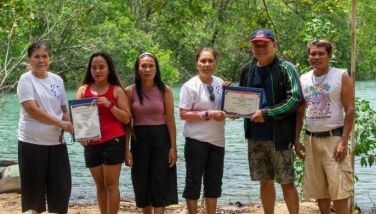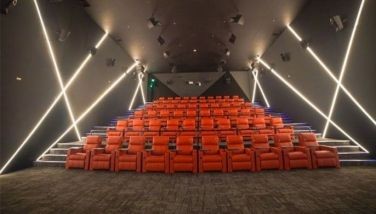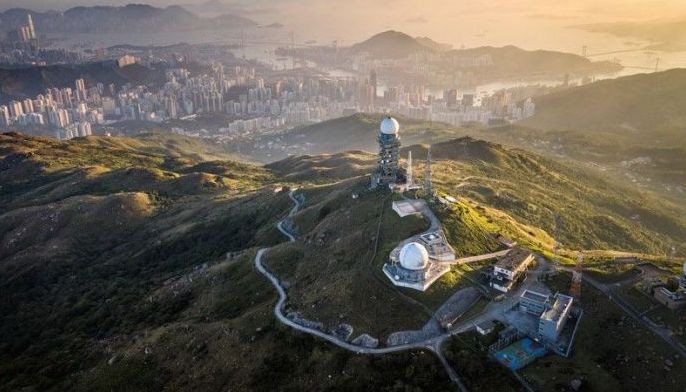It’s not the end of the world

The weeks leading up to the last day of the Mayan calendar incited a panic-stricken overreaction: “It’s the end of the world!” While the rest of the world was dreading the doomsday prediction of Dec. 21, 2012, it was actually an auspicious time for the Mayans. They believed it was the passing of an era, and the beginning of a new one — a time for self-renewal and contemplation in order to charge into the future with positivity.
It was, in fact, a cause for celebration at the Riviera Maya, the 130-kilometer long stretch of Caribbean coastline on Quintana Roo, Mexico’s most eastern state at the Yucatan Peninsula Hotels and resorts capitalized on the occasion with “End of the World” vacation packages from the party city of Cancun in the north, all the way to the Mayan ruins of Tulum to the south. And sure enough, throngs of visitors came to the land first inhabited by the Mayans in 2600 BC that has become a popular beach destination, particlarly during spring break (MTV Spring Break: Cancun Edition, anyone?) This is all with good reason: white sand beaches, eternal sunshine, all-inclusive resorts, a nightlife that runs until day, and a very warm, life-loving bunch of people.
This made me look back at my trip to the Riviera Maya exactly a year ago, and reminded me of how much the locals really did celebrate life — from luring tourists to a quintessential Mexican wedding to partying like there’s no tomorrow. Here were five highlights from my trip:
1 Climbing out of the tourist traps.
Immediately upon arriving at the Cancun International Airport, I could see that the city was meant for tourists. Pick-ups aren’t allowed at the driveway where passengers leave the building, almost as though subtly directing them to the car rentals and taxis by the exit. I had to walk to an obscure side door to meet my friends Marko, a Slovenian, and Dan, an Italian, who had come to pick me up.
Five minutes into driving by Cancun’s famous hotel strip, Zona Hotelera, a police car pulled us over. “Hello, my friends. Where are you from?” Having noticed we were all tourists in the rented Dodge Avenger, he told us we were “over-speeding” the 60 kph speed limit. This was impossible because we had been slowly trailing behind a delivery truck. Luckily, Marko knew what he was up to. He refused to pay the “fine,” gave his license to the cop, told him he would go to the police station himself tomorrow to pick up it up, and asked for his name so he could appropriate the report. The cop went to consult with his colleague, and a minute later, returned with Marko’s license and said, “I’m sorry, you’re right, you weren’t over-speeding. Have a good evening!”
Five minutes later, we saw them pull over another car full of tourists, probably for “over-speeding.” I checked my watch. It was 8 p.m. — dinnertime.
2 Hitchhiking is okay in the movies, but not a good idea in real life. 
On the four-hour drive from Cancun to Chichén Itzá, the ancient city that was the center of the Mayan empire in Central America from AD 750 to 1200, we ran out of gas halfway into the journey. We were on a deserted highway — no gas station, no people, no signs of life. We tried pushing the car to jump-start it, but it wouldn’t budge.
Desperate, I walked to the middle of the highway, and stuck my thumb out, trying to flag down any moving vehicle in sight. Cars drove past — and while I saw them look out their windows — nobody stopped. Fear crept in after the sun set as the skies had began to turn dark. We were in the middle of nowhere, with our luggage stuffed with all our possessions in the trunk, armed only with a prepaid US cell phone that was out of credit. I really didn’t want my parents to read about me in the next day’s news.
Suddenly, a car service truck slowed down. Marko, Dan and I jumped and ran to it. Apparently, someone else’s car had broken down several miles ahead of us and they had called for repair — and the repair man thought it was us! We trusted him with Dan, who rode with him to the nearest gas station. He came back with a plastic bottle filled with gas, and we used a cardboard to act as a funnel in transferring it into the tank — hurray! The repair man told us that we were very lucky. He said that no one would have stopped for us because everyone thought we were highway robbers, and hitchhiking was our modus operandi. Oh, wow.
Of course, when we got to the site of the new Seven Wonders of the World two hours later, it was closed. We had to settle for the lights-and-sounds show and watch the Temple of Kukulkan (also known as El Castillo) from afar and in the dark. But hey, at least we made it there. Alive.
3The Riviera Maya’s beaches are some of the most visited in the world — and with good reason. The beaches in the Riviera Maya sparkle with crystal blue waters, powder white sand, and some of the most bronzed and toned bodies in the planet. The most interesting of them all for me was Tulum, which houses the Mayan ruins on 12-meter cliffs overlooking the beach. Most tourists come in and take in the ruins before throwing off their tops and jumping into the Caribbean sea.
The range of hotels offers something for everyone. I hotel-hopped every night because my friends and I wanted to explore. We stayed at a quaint boutique hotel at downtown Playa del Carmen (Illusion Boutique Hotel by Xperience), an upscale one in Cancun’s Zona Hotelera (Hyatt Regency), and an all-inclusive resort back in Playa (Grand Palladium Colonial Resort). The inexpensive boutique hotels offer free WiFi and breakfast, plus an unlimited supply of water, and the more upscale ones charge an arm and a leg even for just half an hour of Internet. All-inclusive resorts are also extremely popular, especially with families and weddings. The rate usually includes unlimited food and drink (including alcohol), apart from the rooms, and access to all the other facilities like the pool, the gym, etc. It’s kind of like being on a cruise but on land.
4 The best Mexican food is found in the side street taquerias.
I find that the food in hotels and resorts is tempered to tourist tastes. A super torta (Mexican sandwich) stall called Tortas y Tacos on the side street of downtown Playa del Carmen near Illusion was the most memorable meal I had. It was a warm toasty baguette filled manchego and chicken, along with lettuce, onions and tomato, which I topped with salsa and chiles. It was so good, and only 20 Mexican pesos!
A taqueria across Coco Bongo in Playa del Carmen also serves a fantastic flank steak alambre served in a claypot.
5 Mexican weddings are a celebration of a lifelong partnership — and all things fun.
The reason for my trip was for my Mexican friend Susana’s wedding. A civil ceremony preceded the actual church one at the resort’s Nuestra Señora de las Nieves. A Mayan ceremony was held shortly after by the beachfront, a cultural tradition if you marry in this part of Mexico. Based on the Mayans’ connection to the universe and their gods, a Shaman administered it in front of the sea, in balance with nature, the four basic elements (fire, earth, water and air) and the universe.
The reception was held a few steps away with a large international buffet. At 10 p.m., massive sombreros, chicken hats, toy guitars, oversized sunglasses and lots of other props flown in from Chihuahua were passed around, and that’s when all the craziness began. At midnight, we moved to the “after-party” at the resort’s club. And it wasn’t just us “kids,” the adults had their own after-party, too — at another club at the resort!
By 3 a.m., it was merienda a.k.a. chilaquiles time. Everyone queued for the piping hot tortillas topped with pulled chicken, eggs and refried beans smothered in cheese and salsa. I decided to call it a night afterwards, but the rest partied until the sun rose. Not coincidentally, giveaways for the wedding included a Hangover Kit, and more bottles of tequila and mezcal. With that being said...
6 You haven’t partied ‘til you’ve partied with the Mexicans.
I remember when I first arrived at Illusion Hotel at Playa del Carmen. I had literally just set my bags down when five Mexicans barged into the room with bottles of tequila, wine, scotch and almost any liquor you can think of. “Hola, Cherrrrr!!!” My Mexican welcome began with shots of tequila which followed with us ambling around the streets taking swigs from the bottles before entering the popular Coco Bongo, where 500 other people had the same agenda as us: to party the night away. The entrance fee covers free-flowing drinks until 3 a.m., while an interactive live show featured singers and dancers impersonating Madonna, Lady Gaga, and the Moulin Rouge girls. Energy pulsated throughout the club walls. It was as if there was no possible way the night could end.
At 4 a.m. as I was about to retire, I was coerced into an “after-party” at Mandala. Tequila flowed freely like there was no tomorrow. Head throbbing, I called it a “night” at 5 a.m., and the Europeans followed suit. The sun had already risen high in the sky when the Mexicans decided to retreat.
Even at the Grand Palladium resort, there is a “secret adult’s pool,” with a bar that serves margaritas and piña coladas as early as 9 a.m.!
No wonder Cancun still consistently ranks No. 1 among the Top 10 Spring Break Hot Spots every year.
* * *
You can reach me at http://www.twitter.com/cheryltiu.



















